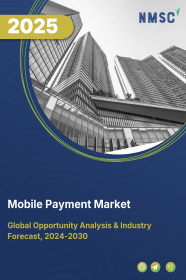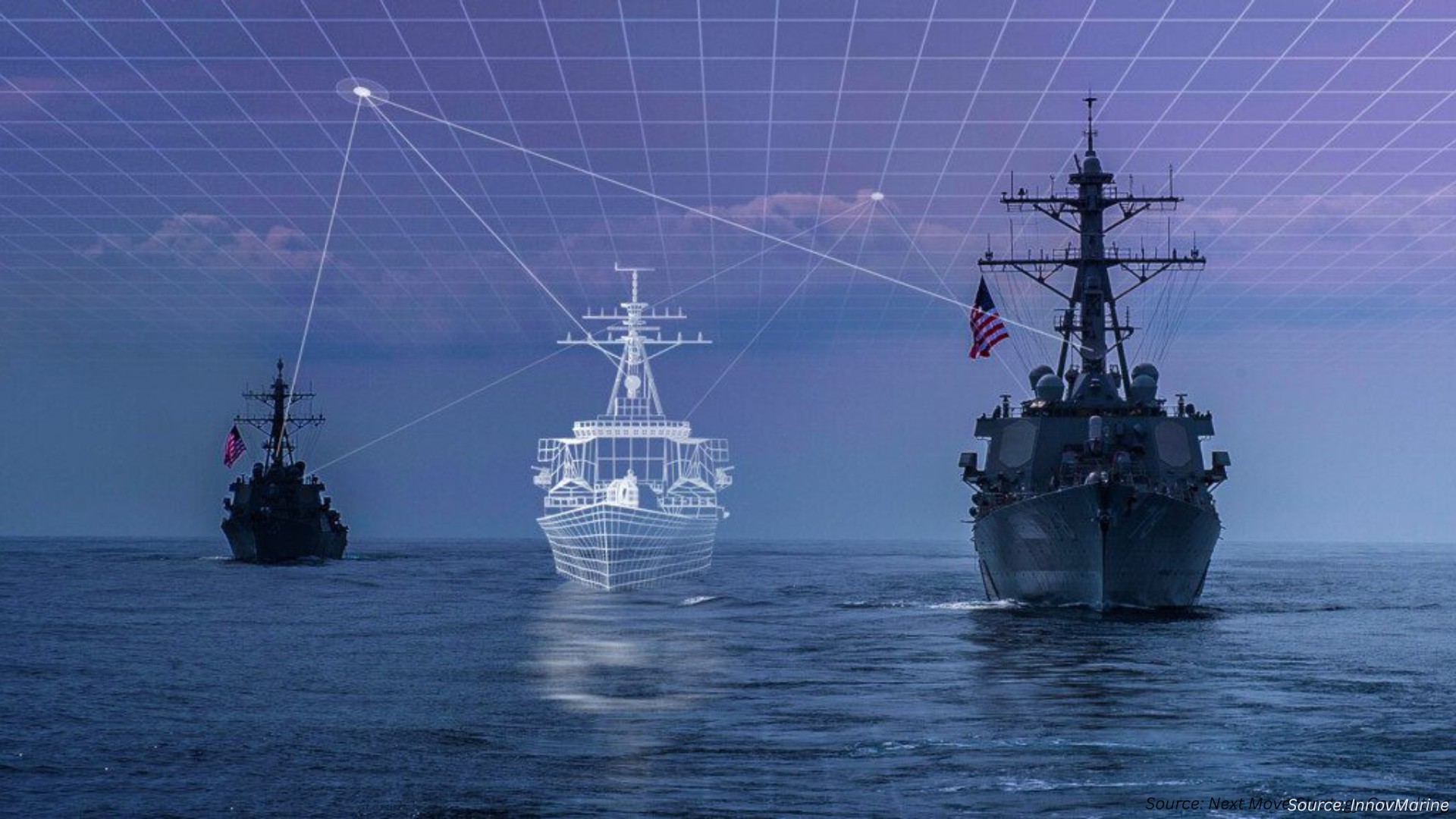
Mobile Payment Market by Age (Generation Z, Millennials, Generation X, and Baby Boomers), by Payment Type (Proximity and Remote), by Application (Money Transfers, Merchandise Purchases, Bill Payments, Airtime Top-ups, Ticketing, and Others) – Global Opportunity Analysis and Industry Forecast, 2023–2030
Industry: ICT & Media | Publish Date: 20-Feb-2025 | No of Pages: 335 | No. of Tables: 246 | No. of Figures: 208 | Format: PDF | Report Code : IC11
Market Definition
The global Mobile Payment Market size was valued at USD 83.39 billion in 2022, and is predicted to reach USD 201.39 billion by 2030, with a CAGR of 13.5% from 2023 to 2030. Mobile payment system is also known as money transfer, mobile money, m-payments, electronic payments, and digital payments. It is a method of conducting financial transactions using a mobile device, including smartphones, tablets, and wearables. These payments can be made through mobile apps or different ways, such as proximity and remote.
There are several types of mobile payment systems, including mobile wallets, mobile banking apps, and online payment services, such as PayPal, Venmo, and Google Pay. These mobile payment systems use various technologies, such as SMS, near-field communication (NFC), quick response (QR) codes, and others, to facilitate transactions. They also use additional security measures, such as encryption and biometric authentication, to protect personal and financial information.
Mobile payment systems have many uses and benefits, including convenience, speed, security, integration with other financial apps, and contactless payment. Such uses and benefits make people adopt these digital processes. The payment apps can be set up to automatically pay bills, such as utility bills or credit card bills, on a regular basis. This helps users manage their finances efficiently and avoid late payments.
High Adoption of Smartphones and Growing Internet Penetration Drive the Market Growth
The rise in the adoption of smartphones and other mobile devices has led to the mobile payment market growth. According to the Groupe Speciale Mobile Association (GSMA), there will be 7.5 billion smartphone connections by 2025, accounting for four in five mobile connections globally. As more people use their mobile devices to access the internet and carry out financial transactions, the demand for mobile payment systems has increased. According to the Global Statshot Report, the number of internet users has grown from 4.95 billion in July 2021 to 5.19 billion in July 2023, which registers an increase of 4.85%.
Smartphones have made it much easier for consumers to make payments using their mobile devices, as they can access a wide range of mobile payment apps and services. With a smartphone, consumers can make payments anytime and anywhere by using their mobile devices. This is especially useful for people who are on the go or need easy access to traditional payment methods, including credit cards or cash.
Moreover, the benefit of using a smartphone for mobile payments is security. Many mobile payment apps and services utilize advanced security measures, including biometric authentication and encryption, for securing financial information and preventing fraudulent activities. This gives consumers added peace of mind while making mobile payments. Moreover, internet penetration has played a significant role in the growth of the mobile payment market. This has led to a greater demand for mobile payment services as more people have become familiar with using their phones to transfer payments, transfer money, and manage their finances. This, in turn, made mobile payment services more convenient and accessible than before and further contributed to the growth of the market.
Rising Fintech and Digital Banking Drive the Mobile Payment Market
Fintech and digital banking use technology to improve and innovate financial services. The mobile payment system is a fintech solution that allows people to transfer payments using their mobile devices. Digital banking refers to using online and mobile platforms by financial institutions to offer banking services, such as account management, bill pay, and money transfer. These platforms often integrate with mobile payment systems, allowing consumers to transfer payments from their bank accounts using their mobile devices.
Fintech and digital banking are disrupting traditional financial services, and have significantly changed how individuals access and manage their financial accounts. Mobile payment systems are a key part of this transformation, as they offer a convenient and secure way to transfer payments for consumers and manage the finances using their mobile devices. The growth of fintech and digital banking is driving significant changes in the financial industry and offering new and innovative solutions to consumers.
Risks Related to Data Breaches and Security Concerns Hamper the Market Growth
Data breaches and security concerns pose significant risks in the mobile payment market. Mobile payment systems handle sensitive financial information, and a data breach can expose this information to unauthorized parties. Despite various security measures, such as encryption and authentication, data breach incidents occur at regular intervals.
Mobile payment providers continuously monitor and update their security measures to protect against potential threats. Consumers can also protect themselves by using strong passwords, enabling two-factor authentication, and avoiding suspicious links or emails to protect against potential threats.
The Emergence of Real-Time Payment Creates Opportunities in the Market
Real-time payment (RTP) schemes within mobile payments refer to systems and technologies that facilitate instantaneous and immediate transfer of funds between individuals or entities using mobile devices. These schemes leverage digital platforms to enable swift, secure, and seamless transactions, ensuring that funds are transferred in real-time, often within seconds. RTP solutions in mobile payments enhance the speed, convenience, and efficiency of financial transactions, catering to the fast-paced nature of modern digital commerce and enabling users to send and receive money swiftly.
Traditional online banking relies on bank credentials such as account numbers to transfer money. In contrast, RTP schemes use digital credentials such as phone numbers and mobile apps to transfer funds in real-time using modern technology. These schemes are driven by retail bank partnerships and central banks looking to increase the use of digital cash payments.
Some examples of RTP globally include Unified Payments Interface (UPI) in India, Cobro Digital (CoDi) in Mexico, Pix in Brazil, and others. In addition, developed nations are drawing inspiration from these advancements and actively striving to establish comparable systems within their territories. For instance, in July 2023, the U.S. Federal Reserve (Fed) announced the launch of its RTP system, FedNow, with the support of 41 banks and 15 service providers. These include community banks and large lenders, such as JPMorgan Chase, Bank of New York Mellon, and US Bancorp.
Asia-Pacific is Projected to Dominate the Mobile Payment Industry
Asia-Pacific held a significant mobile payment market share in 2022, as more and more people are embracing cashless payments to make the region a digital society and gain efficiency and convenience. Several banks, payment networks, and payment service providers have been collaborating to develop safe and user-friendly solutions and speed up the adoption of digital payments. Mobile payment methods, including PayPal, Payoneer, Alipay, WeChat Pay, Paytm, OVO, GrabPay, and DOKU, are a few of the most popular methods in the region.
Moreover, high-speed internet connectivity is one of the major factors that promote the adoption of online payment technology. The rise in smartphone adoption and increased public awareness of digital payment systems are also major drivers. The growing use of digital wallets for e-commerce and other activities for making smooth payments drive market growth. According to the Global Payment Report 2020, digital and mobile wallets contributed to nearly 58% of the regional e-commerce payments. They are estimated to reach 68.2% by 2023.
Various applications and platforms have been launched in almost every country to help people use digital payments to perform several functions. These include purchasing products, booking tickets, and paying fees. In addition, the governments in this region are extensively participating and fueling the use of digital payment systems across the region.
For instance, in September 2022, the Government of China introduced the trial of a digital yuan app in the four provinces of China, including Guangdong, Sichuan, Hebei, and Jiangsu. This trial is expanded to cover 23 cities across China, including Beijing, Shanghai, and Tianjin. This launch was aimed to promote the innovation of digital yuan application scenarios, improve the digital yuan ecosystem, and help develop the legal digital currency.
Europe Witnessed Substantial Growth in the Market
Mobile payment systems in Europe have been gaining popularity in recent years, with many consumers and businesses using portable devices to make payments for goods and services. Several factors, including increased smartphone use, high-speed mobile internet connectivity, and the desire for convenient and secure payment options, have driven the adoption of mobile payment systems in Europe.
Several mobile payment systems, including both domestic and international platforms, are available in Europe. Some of the most popular mobile payment systems include Apple Pay, Google Pay, and PayPal along with domestic platforms such as SEPA in the European Union (EU) and Boku in the U.K. These platforms offer various services, including in-store and online payments, peer-to-peer transactions, and bill payment services. Digital wallets have gained popularity as a means of online payment, eliminating the need of providing credit card information to merchants. Mature e-commerce industry in the nations such as the U.K. and Germany have quickly adopted digital wallets and mobile payments.
According to PPRO, mobile commerce in the region stood at 60%, 57%, 55%, and 53% for the U.K., Slovakia, Hungary, and Czech Republic, respectively. The rise in e-commerce services across Europe propels the growth of the market. According to bevh.org, online goods sold in Germany generated a revenue of nearly USD 134 billion in 2021, rising from USD 112 billion in 2020. Mobile commerce is gaining a grip and transforming the dynamics of e-commerce.
In addition, many banks and financial institutions in Europe have developed their mobile payment systems or partnerships with mobile payment providers, enabling their customers to make payments using their mobile devices. Governments and regulatory bodies in Europe are also promoting mobile payment systems as a part of efforts to encourage the use of electronic payments and reduce reliance on cash.
Competitive Landscape
Various market players operating in the mobile payment industry include Alphabet, Inc. (Google), Alibaba Group Holdings Limited, Amazon.com, Inc., Apple, Inc., PayPal Holdings, Inc., Visa, Inc., Tencent Holdings Limited (WeChat), MasterCard International, Inc., Samsung Electronics Co. Ltd., Block, Inc., and American Express Company. These key players have adopted product launches, partnerships, and expansion strategies to strengthen the global market share.
For instance, in November 2022, Google Wallet expanded to 12 other countries to offer people an access to a secure digital wallet. Through this launch, users can make secure payments with a tap of their wrist and enable customers to add mobile tickets for events and shows to their wallets. It also enabled airlines to help travelers save mobile boarding passes.
Moreover, in November 2022, Ant Group (Alibaba Group) launched Alipay+ D-store, a business digitalization solution at the Singapore FinTech Festival. Alipay+ D-store offers a wide range of toolkits for digitalizing the payments for merchants, operations, services, and marketing. This will lead to revenue opportunities and provide improved services to consumers.
Furthermore, in October 2022, Amazon announced Venmo as a new payment option for the orders that are placed through Amazon.com and the Amazon mobile app in the U.S. Through this collaboration, consumers can enjoy convenient, simple, and secure payment methods that will give Amazon customers even more choices during checkout experience than before.
In addition, in September 2022, Block, Inc. announced the expansion of its Cash App mobile payment on e-commerce platforms. Through this development, the company offers users an opportunity to explore discounts and promotions from the Cash App option at checkout.
Mobile Payment Market Key Segments
By Age
-
Generation Z
-
Millennials
-
Generation X
-
Baby Boomers
By Payment Type
-
Proximity
-
Near-Field Communication (NFC)
-
Quick Response (QR) Code Payments
-
-
Remote
-
Internet Payments
-
SMS/Direct Carrier Billing
-
By Application
-
Money Transfers
-
Merchandise Purchases
-
Bill Payments
-
Airtime Top-ups
-
Ticketing
-
Others
By Region
-
North America
-
U.S
-
Canada
-
Mexico
-
-
Europe
-
UK
-
Germany
-
France
-
Italy
-
Spain
-
Denmark
-
Netherlands
-
Finland
-
Sweden
-
Norway
-
Russia
-
Rest of Europe
-
-
Asia-Pacific
-
China
-
Japan
-
India
-
South Korea
-
Australia
-
Indonesia
-
Singapore
-
Taiwan
-
Thailand
-
Rest of Asia-Pacific
-
-
RoW
-
Latin America
-
Middle East
-
Africa
-
Key Players:
-
Alphabet, Inc. (Google)
-
Alibaba Group Holdings Limited
-
Amazon.com, Inc.
-
Apple, Inc.
-
PayPal Holdings, Inc.
-
Visa, Inc.
-
Tencent Holdings Limited (WeChat)
-
MasterCard International, Inc.
-
Samsung Electronics Co. Ltd.
-
Block, Inc.
-
American Express Company
Report Scope and Segmentation
|
Parameters |
Details |
|
Market Size in 2022 |
USD 83.39 Billion |
|
Revenue Forecast in 2030 |
USD 201.39 Billion |
|
Growth Rate |
CAGR of 13.5% from 2023 to 2030 |
|
Analysis Period |
2022–2030 |
|
Base Year Considered |
2022 |
|
Forecast Period |
2023–2030 |
|
Market Size Estimation |
Billion (USD) |
|
Growth Factors |
High adoption of smartphones and growing internet penetration Rising fintech and digital banking |
|
Countries Covered |
28 |
|
Companies Profiled |
11 |
|
Market Share |
Available for 11 companies |
|
Customization Scope |
Free customization (equivalent up to 80 working hours of analysts) after purchase. Addition or alteration to country, regional, and segment scope. |
|
Pricing and Purchase Options |
Avail customized purchase options to meet your exact research needs. |

















 Speak to Our Analyst
Speak to Our Analyst
























